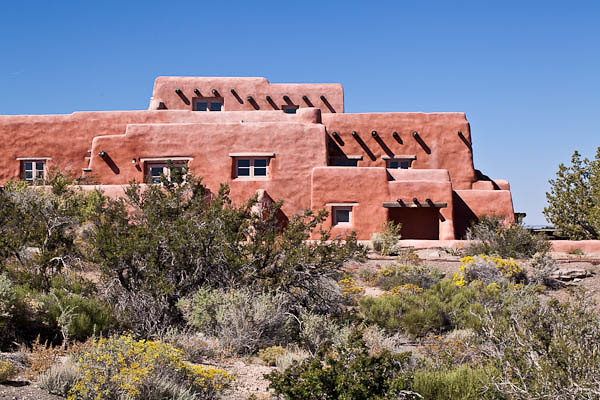During the rehabbing of the Painted Desert Inn in the 1930s under the Civilian Conservation Corps (CCC), the architect, Lyle Bennett, was in charge of the Painted Desert Inn project. Though Bennett joined the park service as a ranger, his expertise about the fine arts (he had a degree in fine arts) made him sought after for many Park Service architectural projects. Under his guidance, the CCC crew designed and built tables and chairs based on Native American designs. Two CCC workers hand-painted these lovely skylights in the Trading Room with designs based on prehistoric art found in Southwestern archeological sites. Even the concrete floors were painted with patterns based on Navajo blankets.
In 1947, the Painted Desert Inn changed ownership and was purchased by the Fred Harvey Company. The company placed their architect, Mary Elizabeth Jane Colter, in charge of again renovating and repairing the buildings. She added a new color scheme to harmonize with the Inn’s surroundings, and also hired Fred Kobotie, a famous Hopi artist, to paint blanket sized murals on the walls of the diningroom and lunchroom. Kapotie’s murals depicted his culture in these paintings and provide glimpses into Hopi culture. Included subjects were the Buffalo Dance, a journey to a sacred place, spring planting time, and a sun face. The sun face also became the logo of the Fred Harvey Company.
Even though the Painted Desert and the Painted Desert Inn (Museum) are in the Petrified Forest National Park, I haven’t posted any photographs of the actual prehistoric wood yet. I promise, the next posts will contain the namesakes of the National Park.











